Search
Remove Ads
Advertisement
Summary 
Loading AI-generated summary based on World History Encyclopedia articles ...
Search Results
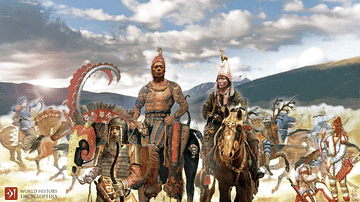
Definition
Scythians
The Scythians were a nomadic people whose culture flourished between the 7th and 3rd century BCE in a territory ranging from Thrace in the west, across the steppe of Central Asia, to the Altai Mountains of Mongolia in the east. This covers...

Image
Scythians
A composite image illustrating the various trends in Scythian looks, clothing, weapons, and jewelry inspired by evidence found in Scythian burial sites.
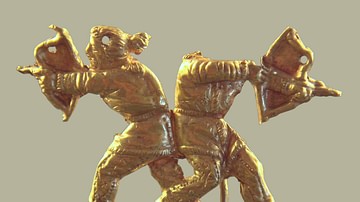
Definition
Scythian Warfare
Scythian warfare used state-of-the-art recurve bows and hit-and-run tactics against set infantry formations. Working from nimble horses, Scythian warriors could unleash a cloud of lethal arrows. Known, too, for their innovative use of scale...
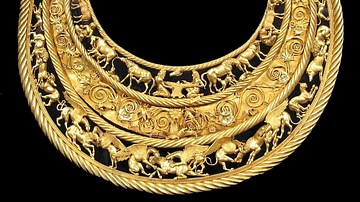
Definition
Scythian Art
Scythian art is best known for its 'animal art.' Flourishing between the 7th and 3rd centuries BCE on the steppe of Central Asia, with echoes of Celtic influence, the Scythians were known for their works in gold. Moreover, with the recent...
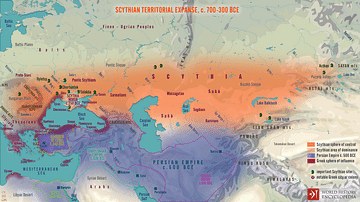
Article
Scythian Territorial Expanse
With 7600 perimeter miles (12,231 km), the Scythians roamed and ruled over an astonishing 1.5 million mi² (2.4 million km²) of territory between the 7th and 3rd centuries BCE. Although building an empire was never in their interest, Scythian...
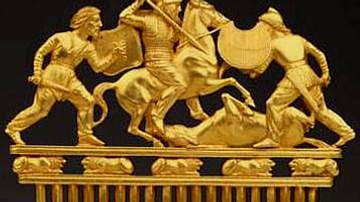
Article
Parthian-Scythian Relations
While little is written about Parthian-Scythian relations, not only did the Parthians share origins with the Scythians and cooperated militarily but social, cultural, and commercial interactions were likely as well. Essentially leading a...

Image
Scythians Shooting with Bows
Scythians shooting with bows, from Kerch, c. 475-450 BCE.
Photographed at the Louvre, Paris, in 2007.
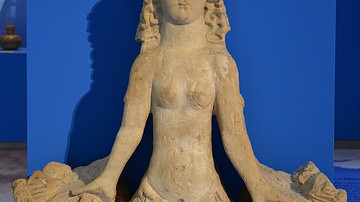
Definition
Scythian Religion
Scythian religion appears to be an amalgam of belief in a pantheon of gods grafted to more ancient animal reverence and shamanistic practice. According to their burial finds, the Scythians appear to have had a deep affinity with the animals...

Video
Scythians: Scientific Analysis of the Oxus Treasure
British Museum Scientist Aude Mongiatti shares some of her research on the Oxus treasure, a selection of beautiful gold and silver objects from the 5th and 4th centuries BC. Some of the objects from the Oxus treasure are on display in...

Video
Scythians: the alternative lifestyle of antiquity
Curator St John Simpson explains how the nomadic Scythians may not have lived in cities, but they still had the skill and desire to live the good life. The BP exhibition Scythians: warriors of ancient Siberia 14 September 2017 – 14 January...